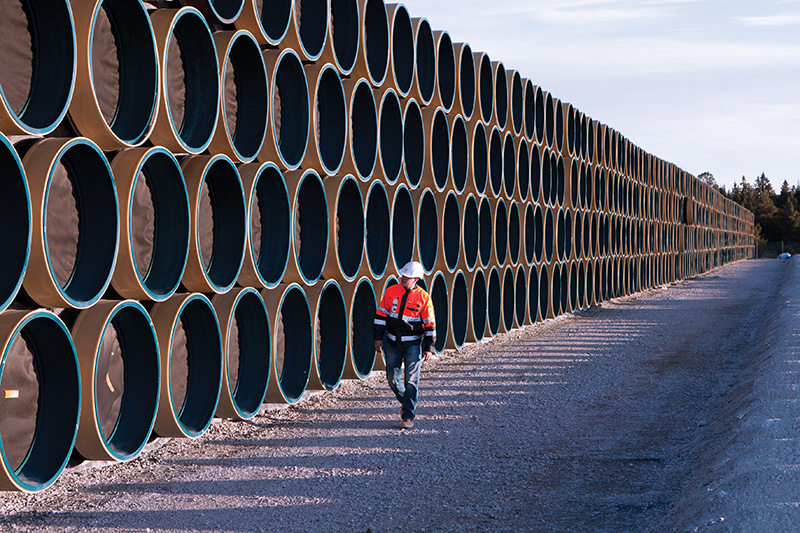March 2022, Vol. 249, No. 3
Special Section: Hydrogen
Europipe’ s Epoxy-Coated Pipelines Ready for H2 Transport
As part of Europipe’s hydrogen research program, the company recently tested different flow coatings in pure hydrogen to evaluate their suitability for use in hydrogen transport.
Suitability tests conducted by the Salzgitter Mannesmann Research Company (SZMF) have confirmed that pipes internally coated with epoxy-based flow coatings can be used for hydrogen pipelines in a 1,450-psi (100-bar) pure hydrogen atmosphere.
The investigated test specimens originate from pipes internally lined at Mülheim Pipecoatings (MPC) with epoxy-based flow coat materials Teknopox 3296-06 (82 vol% solid content) and Teknopox 3297-00 (97 vol% solid content) supplied by Teknos. The flow coating thickness of all specimens was between 61 µm and 120 µm.
The testing protocol followed API RP 5L2 for the resistance to gas blistering and EN 10301/ISO 15741 for the resistance to gas pressure variations (cyclic testing) and hydraulic-pressure blistering. These standards are commonly used for qualification testing of internal coatings for non-corrosive gases.
The “blistering tests” are usually performed with nitrogen as the pressurizing gas to simulate the effect of spontaneous pressure drops on the internal coating.
For the performed tests, hydrogen was used as a pressurizing gas to investigate how or whether hydrogen, having the smallest molecular diameter, would influence the resistance of the coating to spontaneous pressure drops. Missing resistance can lead to blistering, delamination or reduced adhesion of the internal coating.
Specimens were placed in an autoclave and pressurized with hydrogen to 100 bar. For the testing according to API RP 5L2, the pressure was released after 24 hours in less than 5 seconds, to simulate a very rapid pressure drop.
In comparison with API RP 5L2, the testing method according to EN 10301/ISO 15741 exhibited 10 cycles of pressure variations. Moreover, the behavior of the flow coatings when subjected to pressure variations in a liquid environment (water saturated with CaCO3) was investigated.
After all tests, the company said the surface of the specimens were examined and the adhesion of the flow coating was determined according to ISO 2409 (cross-cut test).
Formation of blisters was not observed, and the delamination parameter was determined as “0” for all specimens, confirming excellent adhesion of the internal coating after the performed tests, ensuring that the company’s pipes, with the internal coating applied by MPC, are suitable for future hydrogen pipelines.






Comments